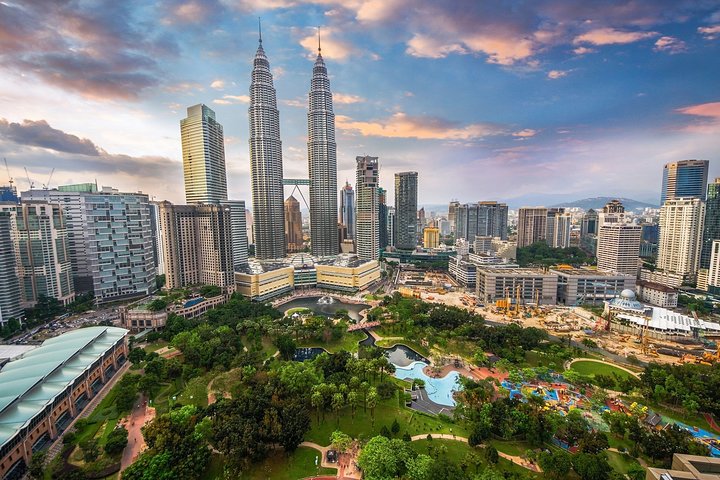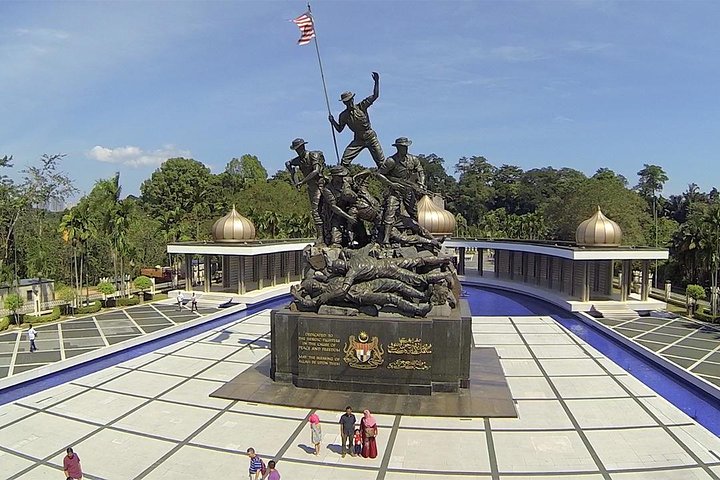Exploring Spiritual Landmarks: A Day in Shah Alam’s Cultural Heart
Drawn by the allure of Malaysia’s largest mosque and an iconic Hindu temple, I embarked on a journey to Shah Alam. The promise of exploring these spiritual landmarks was too enticing to resist.
A Journey Through Spiritual Grandeur
As I embarked on the Blue Mosque and Batu Caves Tour, I was filled with anticipation. The allure of exploring Malaysia’s largest mosque and an iconic Hindu temple was irresistible. My journey began at the Sultan Salahuddin Abdul Aziz Shah Mosque, commonly known as the Blue Mosque. Its majestic blue and silver dome, visible from afar, was a sight to behold. The mosque’s architecture, a blend of Malay and modernist influences, resonated with my appreciation for cultural synthesis.
Walking through the mosque, I was struck by the serenity that enveloped the space. The intricate designs and the sheer scale of the structure were awe-inspiring. It was a place where tradition met modernity, a theme that often echoes in my explorations of Asian cultures. The mosque’s capacity to hold 24,000 people was a testament to its significance in the region.
The experience was not just about the visual grandeur but also about the spiritual ambiance. As I wandered through the landscaped gardens, I felt a deep connection to the cultural heritage that the mosque represented. It was a reminder of the rich tapestry of beliefs and traditions that coexist in Malaysia.
The Mystical Allure of Batu Caves
Leaving the mosque, I headed towards the Batu Caves, a limestone outcrop that houses a Hindu temple and shrine. The journey was slightly marred by a minor inconvenience with the tour vehicle, but the anticipation of what lay ahead kept my spirits high.
Upon arrival, the towering statue of the Hindu god at the entrance was a breathtaking sight. The 272 steps leading up to the caves were a challenge, but the reward was worth every step. As I ascended, the vibrant paintings and scenes of Hindu gods unfolded before me, each telling a story of devotion and mythology.
Inside the caves, the atmosphere was electric. The echoes of prayers and the sight of worshippers paying homage to their deities created a sense of reverence. The monkeys frolicking around added a touch of playfulness to the sacred setting. It was a place where nature and spirituality intertwined, offering a unique glimpse into the Hindu faith.
A Cultural Tapestry at East Coast Batik
The final stop on the tour was the East Coast Batik, a center for Malaysian batik and handicrafts. Established in 1974, it is one of the oldest batik centers in the Klang Valley. Here, I delved into the world of batik, a traditional art form that is both intricate and expressive.
The gallery was a feast for the senses, with vibrant colors and elaborate designs adorning the fabrics. As I learned about the process of creating batik, I was reminded of the meticulous craftsmanship that is a hallmark of many Asian traditions. It was a fitting end to a day filled with cultural exploration.
Reflecting on the tour, I was grateful for the opportunity to immerse myself in the diverse cultural landscape of Malaysia. Despite the minor hiccup with the tour vehicle, the experience was enriching and enlightening. It was a reminder of the beauty and complexity of the cultures that make up this vibrant region.











































